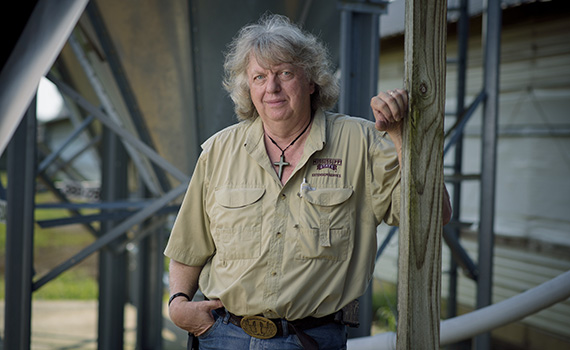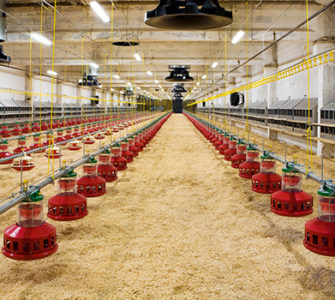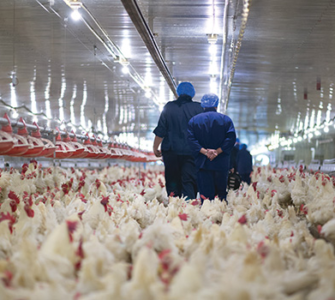Paw quality in broilers: Why it’s important
website builder By Tom Tabler, PhD
Extension Professor
Mississippi State University Extension Service, Poultry Science Department
Mississippi State, Mississippi
Footpad dermatitis is a major concern in broiler chickens because it adversely affects animal welfare. There’s also an increased demand for chicken paws from overseas markets. In fact, in recent years, the value of the paw market to China alone reached $50 million a year.1
Nevertheless, I have observed that paw quality seems to be less important for many broiler growers compared to other concerns such as air quality, temperature control, feed conversion and weight gain. This is somewhat understandable because the financial incentive to improve paw quality isn’t always as obvious as the benefits of improved weight gain or feed conversion, which increase the chicken check. Maintaining good paw quality, however, is well worth the effort because it can benefit flock performance and the bottom line.
Impact of litter quality
Consider that broilers make numerous trips to feeders and drinkers each day. They are constantly exposed to litter conditions that may not always be ideal for maintaining good paw quality.
Footpad dermatitis is often associated with wet litter or poor litter conditions. Severe footpad dermatitis is generally considered to be painful for the birds,2 which in turn can limit the number of trips they make to feeders and drinkers. That in turn is likely to be detrimental to weight gain, feed conversion and overall flock performance.
Dutch investigators demonstrated in a study that wet litter increased severe foodpad dermatitis, reduced broiler performance, reduced carcass yield and had a negative effect on other welfare aspects.3 Because litter quality is closely associated with footpad dermatitis, it likely affects other welfare aspects as well such as gait score, breast blisters and hock burns.
Bedding issues
There was a time when new bedding was thought to be ideal, but that no longer appears to be the case. In fact, a total cleanout and new bedding often yield poor-quality paws for the first two to three flocks. Many growers tend to under-ventilate with new bedding because ammonia usually isn’t as big an issue as it is with used litter. Unfortunately, under-ventilating allows moisture and humidity levels to build rapidly, quickly leading to wet litter and poor paw quality.
In addition, competing markets for commonly used bedding materials such as pine shavings and sawdust are driving up price and driving down the availability and quality of these products. The high cost of bedding material can lead some growers to skimp on how much bedding goes back in the house. I think anything less than 3 to 4 inches is likely not enough, and a baby chick’s tender feet can be easily damaged by sharp edges and large chunks of poor-quality bedding material. Keep in mind that paw damage can begin early — even during the first week of life.
Critical management
Preventing lesions to the tender footpad area is highly dependent on three management tasks:
- Maintaining relative humidity in the house to prevent moisture and cake build up in the litter.
- Making sure drinker lines don’t leak or spill and are kept at the correct height and pressure.
- Maintaining correct litter pH early in the flock’s life by using one of several acidifying agents.
Humidity should be kept in the 50% to 70% range, if possible. Humidity levels of 75% or greater for an extended time will result in damp, caked litter and increased paw problems. Excess water wastage from drinkers due to spillage, leakage or improper height and/or pressure may increase wet-litter problems.
Flow rates and water pressure should be closely managed to match the age of the birds. Nipple height is critical to avoid wastage and caked litter under drinker lines. Birds can’t swallow the same way that humans can and require gravity to help them drink. Therefore, nipple height must be such that water can easily run down their throats — but not onto the litter.
Take immediate action to repair or replace leaking nipples. Follow a routine maintenance program on your water system that includes regular line flushing and sanitation to prevent biofilm buildup, which can cause nipples to leak.
Acidifying agents that lower litter pH seem to be the most effective of the litter-amendment products.4 Treating litter chemically to lower pH usually yields varying degrees of success. Most products only work for a short time, which in most cases is less than 2 weeks. While this does have advantages during the brooding period to help control ammonia and save on fuel usage, it does little to help manage ammonia levels later in the flock. In addition, damp or wet litter may decrease effectiveness of litter amendments.
Remember that litter conditions can vary greatly from one end of the house to the other or within the spaces created by migration fences. This is especially the case during warmer weather when cool cells are often in use, and litter in the cool-cell quadrant can be wetter and have more cake.
The fan quadrant may stay slightly warmer and drier unless foggers are used. In that case, litter in the fan quadrant may also become wet as part of the fog is pulled to the end of the house and discharged by fans.
I encourage every broiler grower to recognize the importance of paw quality. It’s a major animal-welfare issue, a reflection of litter-management practices, and it’s a critical factor in overall flock performance.
Editor’s note: The opinions and advice presented in this article belong to the author and, as such, are presented here as points of view, not specific recommendations by Poultry Health Today.
1. Thornton G. Is Sanderson Farms poised for big earnings in 2017? Watt Ag Net.com. June 9, 2016.
2. Michel VE, et al. Histologically-validated footpad dermatitis scoring system for use in chicken processing plants. Brit. Poult. Sci. 2012;53(3):275-281.
3. de Jong IC, et al. Wet litter not only induces footpad dermatitis but also reduces overall welfare, technical performance, and carcass yield in broiler chickens. J Appl Poult Res. 2014;23(1):51-58.
4. Ritz CW, et al. Litter quality and broiler performance. 2014. University of Georgia Extension Bulletin No.1267. University of Georgia, Athens.
Posted on December 13, 2017

















